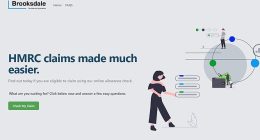Drive brand establishment. Strengthen customer relationships. Empower businesses.
That’s what digital marketing agencies strive to do for their clients.
They leverage various tactics, tools, and platforms to help brands build a solid digital presence and maximize growth.
However, thriving in today’s digital landscape, defined by ever-evolving customer trends, isn’t easy.
That’s where leveraging predictive analytics can help!
It can empower agencies with valuable industry insights about the client’s target market behavior, preferences, and more, and anticipate future trends.
This can help optimize marketing efforts, foster accurate decision-making, and ensure customer acquisition, thus leading to revenue growth. In short, predictive analytics can enhance your revenue marketing efforts, leading to high ROI for clients and agencies!
In this post, we will discuss seven effective ways predictive analytics can revolutionize your client relationships.
First, let’s understand the key concept.
What Is Predictive Analytics?
Predictive analytics in marketing means leveraging data, AI-based machine learning techniques, tools, and statistical algorithms to forecast future marketing outcomes.
This advanced analytics process involves evaluating historical and current real-time marketing data to unearth market trends and customer patterns. This can foster accurate business-related predictions.
What can it do for you?
Harnessing predictive analytics can help you optimize digital marketing strategies for your clients, make data-driven decisions, and improve overall campaign effectiveness.
Here’s an excellent example.
Let’s say – you want to create a marketing campaign for your SaaS client that wants to introduce a new product feature.
Here’s how implementing a predictive analytics tool leads to effective campaign creation:
- Initial Training: Develop a predictive analytics model using a training data set. Test it to check its accuracy in making predictions. Go ahead once the initial training is complete.
- Data Analysis: The tool analyzes customer past and current data, including their demographics, past purchases, buying behavior, engagement rate, and more.
- Tool’s Recommendations: The analytics software will offer personalized recommendations based on the input data. For instance, it can suggest you run paid social media campaigns or invest in targeted advertisements tailored to a specific region. This allows you to help the SaaS client boost reach, engagement, conversion, and customer retention.
Predictive analytics thus provides you with a roadmap to creating winning marketing strategies.
When implemented correctly, it can allow you to allocate marketing resources effectively and efficiently, thus maximizing revenue for the client.
Top Benefits of Predictive Analytics for Digital Marketing Agencies
Here are the top benefits of predictive analytics for digital marketing agencies.
Manage a Vast Stream of Data
Manually collecting and analyzing a vast stream of customer data is challenging.
This can be streamlined by integrating predictive analytics software with data management solutions.
For instance, to serve an eCommerce client, you should have product data details, including its specifications, features, attributes, descriptions, etc.
In such instances, integrating predictive analytics software with their PIM solution (product information management software) can help access centralized data storage, streamlining the analysis process.
This can save your efforts while improving your eCommerce client’s product listings and customer experience.
Creating Personalized Messages
Understanding customer data and trends can help determine whether the marketing strategies are aligned with audience expectations.
The predictive analytics tool can allow you to gauge what aspects resonate with the audience and create relevant, timely, and personalized messages. This can boost customer acquisition, thus maximizing conversions.
Mitigating Biased Decisions
Making assumptions and unconscious biases while building marketing strategies for your clients can negatively impact their business. In such instances, harnessing the right predictive analytics software can prove beneficial.
It empowers you with business recommendations based on customer and market data. This can mitigate unconscious biases during decision-making.
Making Accurate Predictions
Predictive analytics software allows you to monitor how the target market behaves at several points in the buyer journey.
With this software, you can segment your client’s audiences based on their demographics, interests, and more and make accurate predictions.
Increasing Customer Retention and Loyalty
Capitalizing customer data can help you navigate ever-evolving trends and create marketing strategies that can retain clients’ customers in the long term.
According to Forrester, loyal customers feel emotionally connected to brands. They help brandsacquire new customers via positive word-of-mouth marketing.
In fact, loyal customers buy 109% more per year than others. This can be a game-changer for your clients!
Enhancing Your Team’s Productivity
This is one of the most underrated benefits of predictive analytics for agencies.
With predictive analytics tools, you can streamline your agency’s operations and utilize resources efficiently. This can save costs and time and boost your team’s productivity.
The result? Your team can take up more strategic projects while ensuring quality outcomes for each client. There’s zero guesswork involved!
4 Steps for Agencies to Implement a Predictive Analytics Model
Here’s the step-by-step approach to building a predictive analytics model successfully.
#1: Decide on a Clear SMART Goal
Define a SMART goal, that’s –
- Measurable
- Achievable
- Time-bound
For instance, a SMART goal could be to build a predictive analytics model in a month to forecast your client’s success with an accuracy of at least 95%.
#2: Identify and Quantify Data Sources
Next, ask yourself:
- What are the key data sources?
- What data formats do we require?
- How much historical data do we have?
- How can I integrate various data channels to strengthen the analytics engine?
The answers to these questions help identify and quantify the relevant data sources.
Moreover, you gain an understanding and decide what data is required to make accurate predictions.
For instance, you may need clients’ customer data like their purchases, transactions, feedback, etc. Furthermore, you may also require details like market demand for their product or services, social media sentiment, etc.
Collect these data by identifying relevant data sources in a consistent format.
Remember that collecting high-quality data is pivotal to successful predictive analytics model development.
#3: Clean and Analyze Relevant Data
Cleaning the collected data can ensure reliable output.
Here’s how you can clean the collected data.
- Identify and remove duplicate data.
- Maintain a standardized data format across variables.
- Identify and manage data outliers or anomalies (deviations in data that don’t follow the norm) to ensure correct input.
- Conduct various data audits to ensure its integrity.
#4: Start Experimenting
Create a hypothesis and a test model to validate various variables and factors. Include or exclude variables by testing the predictive analytics model using historical data.
The key objective is to understand and determine whether the outcomes generated by the analytics model align with the hypothesis.
Once you’re confident, start deploying your predictive analytics model.
Consistently track and measure the outcomes to identify anomalies and variables that need to be removed or toned down.
7 Ways Agencies Can Leverage Predictive Analytics to Provide Exemplary CX to the Clients
Let’s explore how agencies can leverage predictive analytics to provide remarkable customer experience (CX), thus turbocharging their client’s growth.
#1: Audience Segmentation
With a predictive analytics solution, you can segment the client’s target market based on their preferences and behavior.
This can help create ideal customer personas, allowing you to understand the audience interested in your client’s services and products.
Leverage this data to build personalized marketing strategies to target ideal customers and improve conversions.
#2: Website Optimization
Predictive analytics tools can capture relevant, real-time data on your client’s website user behavior.
This can help you understand how the client’s users interact and engage with the web assets.
Besides, crunching this data allows you to determine user patterns, such as:
- CTAs that get the most clicks
- The usage rate of the client’s website pages and features
- Most viewed content pages
With these insights, optimizing the website design becomes a breeze. This can boost your client’s conversions.
#3: Customer Lifetime Value (CLV) Optimization
Predictive analytics tools allow you to analyze data like purchasing patterns, engagement, and behaviors of your client’s customers.
This can unearth high-value customers and their lifetime value.
What’s more?
Incorporating analytics recommendations can help you build strategies to improve retention rates.
For instance, the predictive analytics tool can suggest you run exclusive customer loyalty programs for a high-value customer group. This can lead to improved CLV and retention rates.
Moreover, the software can identify customers at the risk of churning and suggest retention strategies, such as targeted emails, social media campaigns, etc.
#4: Content Creation
Predictive analytics software can empower you to create SEO-driven content for your client’s website. This can improve their online visibility, engagement, and conversions.
Here’s how –
A predictive analytics tool can analyze the client’s website data and engagement metrics to help:
- Identify topics that address their customer’s pain points and needs.
- Unveil the most relevant keywords to strengthen their SEO practices.
- Predict the impact and engagement potential of content ideas.
#5: Ad Campaign Performance Forecast and Improvement
Predictive analytics tools evaluate historical and present marketing data.
This analysis can help you forecast your client’s ad campaign performance outcomes.
Moreover, you can use this information to adjust the budget allocation and optimize the ad strategy to achieve a high ROI.
#6: Most Effective Channels Identification
Predictive analytics can help maximize the effectiveness of your client’s marketing campaigns by determining the top-performing channels.
Here’s how –
The predictive analytics model can analyze clients’ historical marketing campaign data and performance metrics like cost per acquisition (CPA), click-through rate (CTR), customer lifetime value (CLV), etc.
These insights can unearth channels delivering the highest ROI and conversion rates.
Optimize marketing strategy for your client by targeting channels that can bring high ROI. This can boost user engagement, conversions, and revenue in the long term.
#7: Social Media Management
Predictive analytics solutions can help discover emerging trends, hot topics, trending hashtags, conversations, and more on various social media channels.
With these insights, you can create a compelling social media strategy resonating with your client’s audience. This can drive high engagement and online visibility.
What’s more? Predictive analytics tools can help optimize social media ad targeting. Additionally, the model can strengthen influencer marketing by finding niche influencers.
This can promote your client’s brand on social channels without hassles.









